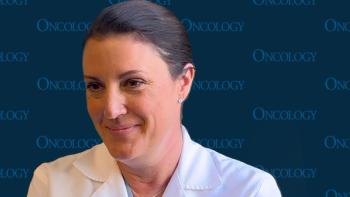
Neoadjuvant Bevacizumab May Benefit Subset of Breast Cancer Patients
Preoperative bevacizumab may predominantly benefit breast cancer patients with a high baseline microvessel density, according to a new study.
Preoperative bevacizumab may predominantly benefit breast cancer patients with more extensive, dense tumor vasculature, according to the results of a study
Rakesh K. Jain, PhD, director of the Edwin L. Steele Laboratory for Tumor Biology at Massachusetts General Hospital in Boston, and colleagues investigated the molecular effects of neoadjuvant bevacizumab, an antiangiogenic vascular endothelial growth factor (VEGF)-targeting antibody, plus chemotherapy in breast cancer patients in a phase II clinical trial.
The study authors found that bevacizumab was beneficial to those patients who had tumors with a high baseline microvessel density.
Clinical trials have shown varying efficacy for breast cancer patients treated with either neoadjuvant or adjuvant bevacizumab. Pathologic complete response (pCR) rates increased with the addition of bevacizumab to neoadjuvant chemotherapy in patients with HER2-negative breast cancer, including those with triple-negative breast cancer (TNBC). Yet, the National Surgical Adjuvant Breast and Bowel Project B-40 trial showed a benefit for hormone receptor–positive disease but not for TNBC. In the adjuvant setting, bevacizumab added to adjuvant chemotherapy did not improve disease-free survival.
To investigate the mechanism of how bevacizumab affects the vasculature of tumors, Jain and coauthors treated 103 HER2-negative breast cancer patients with neoadjuvant bevacizumab plus adriamycin/cyclophosphamide/paclitaxel chemotherapy and examined tumor biopsies before and after treatment.
Patients with TNBC had a pCR rate of 52% (11 of 21 patients), higher than patients with hormone receptor–positive disease (6%; 5 of 78 patients).
Studying serial tumor biopsies before and after bevacizumab monotherapy, the authors found pCR correlated with soluble VEGF receptor 1 after treatment among TNBC patients (P = .0033) and with pretreatment microvascular density in all patients (P = .0005).
Further biopsies after subsequent neoadjuvant treatment with bevacizumab plus chemotherapy showed that bevacizumab pruned still-forming vasculature and induced blood vessels to mature, and also reduced interstitial fluid pressure and changed levels of circulating VEGF.
“Our results indicate that a significant percentage of breast cancers do not have a blood supply sufficient to benefit from the vascular normalization provided by antiangiogenic drugs,” said Jain in a statement. “Our findings provide the first direct evidence of a relationship between structural vascular normalization and the extent of tumor regression after neoadjuvant bevacizumab treatment in breast cancer,” he added.
The study also identified potential blood biomarkers of response to treatment, including soluble VEGF receptor 1 levels, which will require further validation in prospective clinical trials.
Newsletter
Stay up to date on recent advances in the multidisciplinary approach to cancer.

















































































